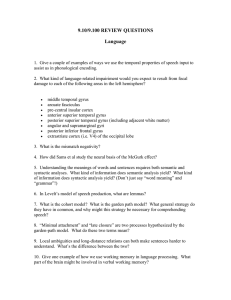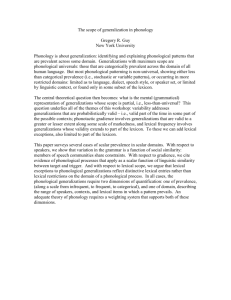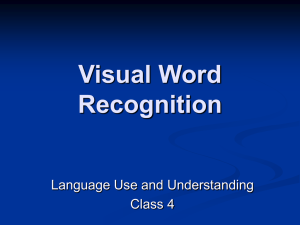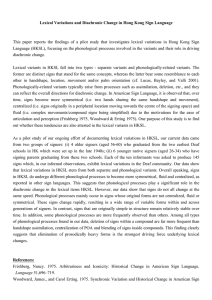24.900: Introduction to Linguistics CLASS NOTES: MARCH 11
advertisement
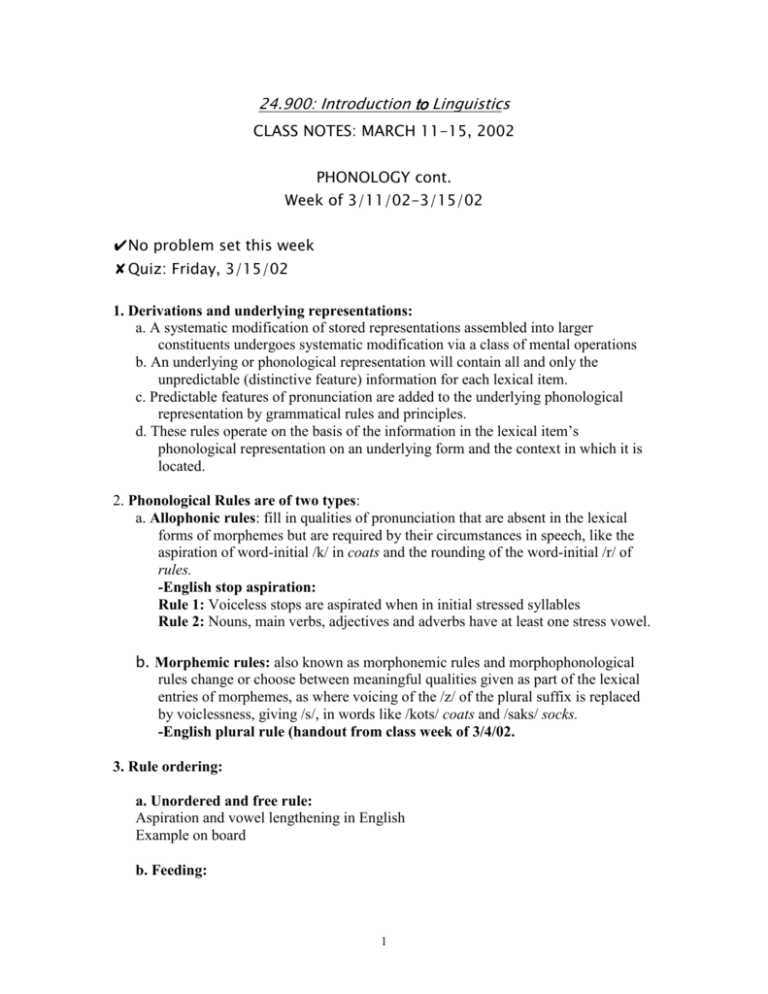
24.900: Introduction to Linguistics CLASS NOTES: MARCH 11-15, 2002 PHONOLOGY cont. Week of 3/11/02-3/15/02 ✔No problem set this week ✘Quiz: Friday, 3/15/02 1. Derivations and underlying representations: a. A systematic modification of stored representations assembled into larger constituents undergoes systematic modification via a class of mental operations b. An underlying or phonological representation will contain all and only the unpredictable (distinctive feature) information for each lexical item. c. Predictable features of pronunciation are added to the underlying phonological representation by grammatical rules and principles. d. These rules operate on the basis of the information in the lexical item’s phonological representation on an underlying form and the context in which it is located. 2. Phonological Rules are of two types: a. Allophonic rules: fill in qualities of pronunciation that are absent in the lexical forms of morphemes but are required by their circumstances in speech, like the aspiration of word-initial /k/ in coats and the rounding of the word-initial /r/ of rules. -English stop aspiration: Rule 1: Voiceless stops are aspirated when in initial stressed syllables Rule 2: Nouns, main verbs, adjectives and adverbs have at least one stress vowel. b. Morphemic rules: also known as morphonemic rules and morphophonological rules change or choose between meaningful qualities given as part of the lexical entries of morphemes, as where voicing of the /z/ of the plural suffix is replaced by voiclessness, giving /s/, in words like /kots/ coats and /saks/ socks. -English plural rule (handout from class week of 3/4/02. 3. Rule ordering: a. Unordered and free rule: Aspiration and vowel lengthening in English Example on board b. Feeding: 1 The application of one rule creates an environment that makes possible the application of another rule that could otherwise not get applied. Examples on board c. Ordered rules: Consider the Polish data in the handout from last week. d. Deletion e. Epenthesis f. Assimilation 4. The external organization of speech sounds a. The syllable - stress - foot structure 2

